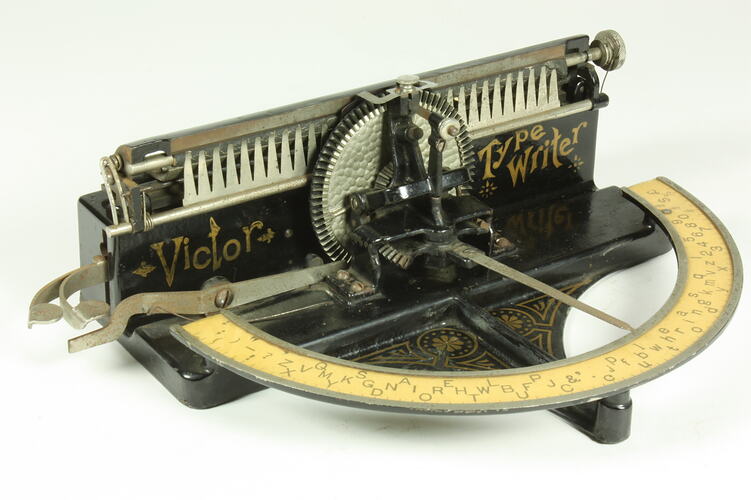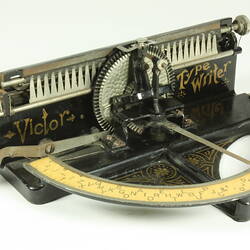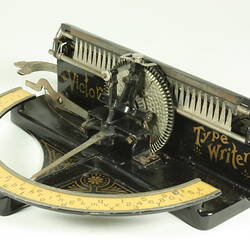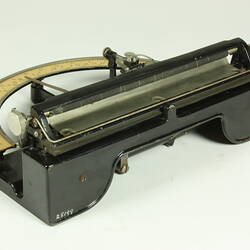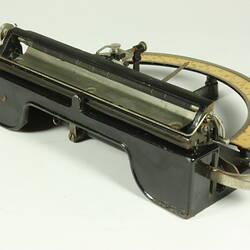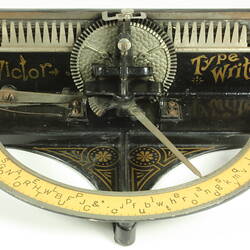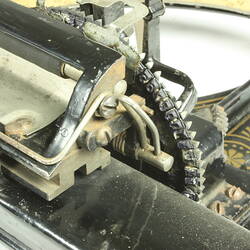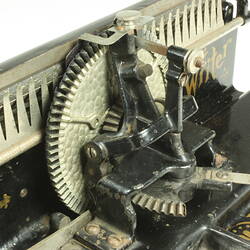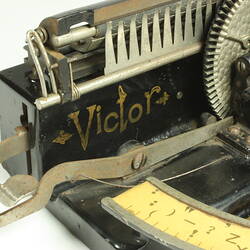Summary
Typewriter of the circular index, typewheel class manufactured by the Tilton Manufacturing Company of Boston, Massachusetts, U.S.A. The design was patented in 1889 by F. D. Taylor and J. A. White.
In the Victor typewriter a pointer moves over a semicircular index on which are marked letters, numbers and other characters. The pointer is connected to a sector gear which meshes with a typewheel mounted on a horizontal axis. The typewheel has 80 flexible fingers around its periphery. Attached to the wheel is a circular rubber strip carrying individual characters, each of which corresponds to one of the flexible fingers. Moving the pointer rotates the typewheel to bring the selected character to the printing point. Pressing a key beside the index triggers a small hammer which forces the flexible finger and the attached rubber character against the paper and platen. Ink is applied to the character by two inking pads against which the typewheel fingers brush as the wheel rotates.
The Victor was the first typewriter to incorporate a typewheel of the form which later became known as the 'daisywheel'.
Physical Description
Rectangular black metal base with central forward extension supporting a semicircular index marked with letters, numbers and other characters in black on a white background. Metal pivoted pointer moving over index is connected to horizontal sector bevel gear which meshes with bevel gear attached to vertical typewheel. Typewheel fitted with rubber strip around its circumference. Strip carries embossed characters. Pivoted hammer presses selected character against vertical platen when key to left of index is depressed. A second key controls spacing. An inking pad is positioned on each side of printing point and brushes agaist typewheel as it rotates.
More Information
-
Collecting Areas
-
Acquisition Information
Purchase
-
Manufacturer
Tilton Manufacturing Company, Boston, Massachusetts, United States of America, 1894
-
Inscriptions
On front of platen support: 'Victor Type / Writer' Scratched under metal base: '3983' Printed under metal base: '3983'
-
Classification
-
Category
-
Discipline
-
Type of item
-
Overall Dimensions
300 mm (Width), 210 mm (Depth), 195 mm (Height)
-
Dimensions
21 cm (Length), 30 cm (Width), 9.2 cm (Height)
Measurement From Conservation. Measuring Method: Maximum dimensions
-
Keywords
